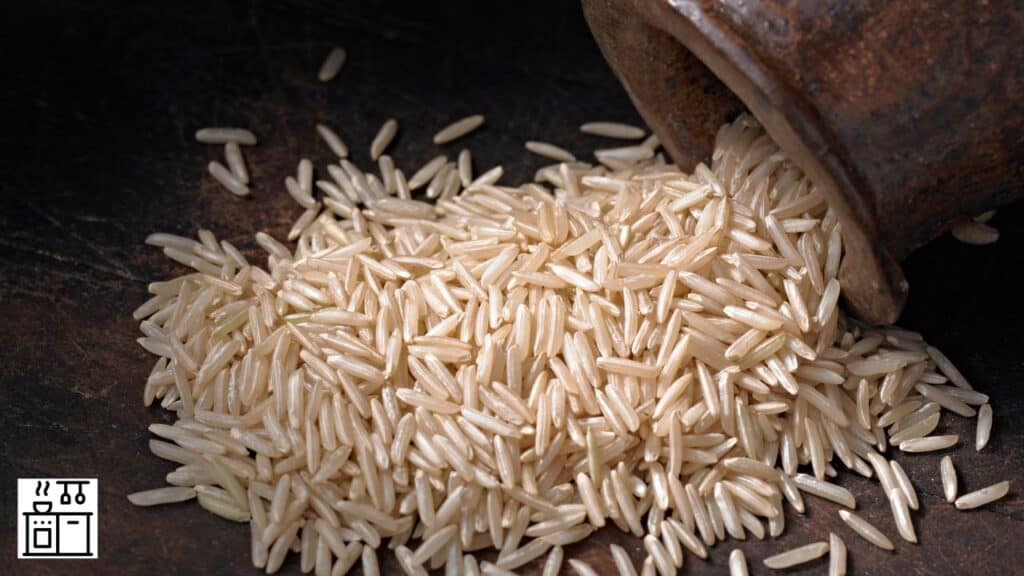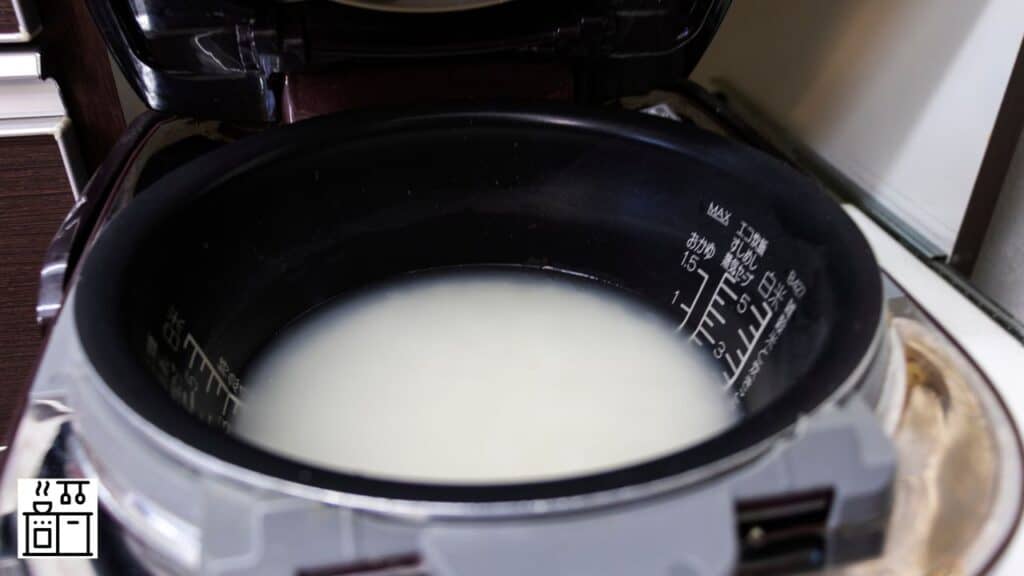A rice cooker makes it easy to cook rice by taking away the guesswork.
Though it produces impressive results most of the time, the outcome depends on getting the ratio of rice and water correct.
There are different types of rice, and each of them cooks differently.
That’s why it’s essential to maintain the correct ratio for each type of rice to cook it properly.
So, what is the ideal rice-to-water ratio for a rice cooker?
Let’s find out.
Rice-To-Water Ratios for Different Types of Rice
The ideal rice-to-water ratio varies for each type of rice.
It’s because some types of rice have tougher coverings and they absorb more liquid during cooking.
For instance, white rice generally cooks more easily than brown rice.
Similarly, the rice used in Asian and Indian cuisines uses a different ratio than other types of rice to cook.
Here are the different rice-to-water ratios for different types of rice.
1. Long-Grain White Rice
1 cup rice – 1.5 cups water
Long-grain white rice is a versatile grain that is commonly available in most supermarkets.
This type of rice is suitable for most cuisines, including Asian, Mexican, and Indian.
When cooked properly, it produces fluffy white grains that separate easily.
To cook long-grain white rice in the rice cooker, you can use the ratio of 1.5 cups of water per cup of rice.
This is slightly more than the ratio for other types of white rice because the long grains absorb more water.
2. Medium-Grain White Rice
1 cup rice – 1.25 cups water
Medium-grain white rice is smaller than long-grain white rice. The grains are two to three times wider than they are long.
This rice ends up being creamier than long-grain rice. It also cooks faster than long-grain rice.
Medium-grain white rice is commonly used to make rice puddings and risotto.
For medium-grain white rice, you can use the ratio of 1.25 cups of water per cup of rice in the rice cooker.
It’s slightly less than the amount of water you would need if you were cooking it on the stovetop.
Recommended Reading: Rice Cooker Bubbles Over? Here’s How To Prevent It…
3. Short-Grain White Rice
1 cup rice – 1 cup water
Short-grain white rice is semi-transparent with round grains. It cooks quickly. This type of rice is good for risotto and stir-fries.
When you cook it with the right amount of water, short-grain white rice will fluff up and separate without clumping together.
However, it can become mushy and clumpy if overcooked or if you used too much water.
When cooking short-grain rice on the stovetop, you can drain the excess water if extra liquid remains after the rice cooks.
But you can’t do this in a rice cooker. So…
Use the ratio of 1 cup of water for each cup of short-grain white rice.
4. Jasmine Rice
1 cup rice – 1 1/2 cups water
Jasmine rice is a special rice variety. It’s a type of aromatic long-grain rice with floral notes.
Most jasmine rice comes from Thailand and South-East Asia. It’s a staple in Thai cooking.
This rice gets its name from its resemblance in color to jasmine flowers.
Though jasmine rice is a long-grain variety, it does not need much water to cook. Using excess liquid makes it sticky and mushy.
The ideal rice-to-water ratio when cooking jasmine rice in a rice cooker is 1:1.25.
5. Basmati Rice

1 cup rice – 1 3/4 cups water
Basmati rice is another variety of highly fragrant long-grain rice. It originates in India and is a staple in Indian and Pakistani cooking.
The grains expand in length and turn fluffy when cooked. It’s soft but holds its shape.
You can follow the same rice-to-water ratio as jasmine rice when cooking basmati rice in a rice cooker.
Add 1.75 cups of water for each cup of basmati rice for it to cook properly. This will make it cook perfectly.
Fluff up the rice grains using a fork as soon as it cooks to prevent the grains from clumping.
6. Brown Rice
1 cup rice – 2 cups water
Brown rice has a brown color because it’s unpolished. There are both long-grain and short-grain varieties of brown rice.
Both types of brown rice are rich in nutrients and fiber. It takes longer than white rice to cook because it’s denser.
Brown rice needs more water than white rice to cook. It also takes longer than white rice to cook, both on the stovetop and in a rice cooker.
When cooking brown rice in a rice cooker, use 2 cups of water per cup of rice.
This should provide enough liquid for the rice to cook properly.
You can also consult the manual of your rice cooker to check if they recommend a higher ratio of water to rice.
7. Sushi Rice
1 cup rice – 1 cup water
Sushi rice is typically used in Japanese cooking. It’s a small-grain variety of white rice.
Sushi rice has a high starch content. Hence, it tends to be sticky.
This stickiness makes it easy to use in sushi and sashimi recipes. Sushi rice is also available in brown grain varieties.
Sushi rice cooks quickly and does not need too much water.
When cooking sushi rice in a rice cooker, you can use one cup of water per cup of sushi rice.
The rice will be sticky and white when done. You can check for doneness by pressing the grains between your thumb and forefinger.
It should yield to pressure without any hard bits.
Top Tips to Improve the Quality of Rice Cooked in A Rice Cooker
Cooking rice in a rice cooker is easy because this appliance does the work by itself.
Just set the ingredients and turn the appliance on. It does the rest.
If you get your measurements correct, the results turn out to be just as good as when rice is made on the stove.
Here are some quick and effective tips to ensure your rice turns out perfectly every time you use a rice cooker.
1. Use the Same Cup for Measurements
Rice cookers come with a measuring cup. We recommend using the same cup to measure both the rice and the water every time you cook.
The rice cooker pot may come with indications for rice and water level. However, this would not be accurate for all types of rice.
So it’s better to use the measuring cup to get your measurements right.
2. Rinse the Rice
Rice is a starchy grain. Some varieties have more starch than others. This starch makes the grains sticky and bind to each other.
While stickiness does not affect some recipes like risotto or rice pudding, it’s not enjoyable most of the time.
The good news is that you can easily wash away most of the starch by soaking and rinsing rice under water.
Rinse it two to three times to get rid of the excess starch. It will help the grains fluff up better when cooked.
3. Choose the Right Setting
If your rice cooker comes with multiple settings, match the setting to the variety of rice for the best results.
Check the instruction manual to find out which setting is recommended for each type of rice to cook the rice perfectly.
Further Reading: For Which Rice Do Rice Cookers Use Less Water
4. Fluff the Rice when Cooked
When you cook rice in a rice cooker, you use a precise quantity of water for each type of rice.
There will be no excess liquid to strain away after cooking. So, the rice can clump together. But you can prevent the rice from sticking together.
Once the rice cooker switches to the keep warm mode or switches off, use a rubber spatula or fork to separate the grains.
This will help the rice fluff up and have a better texture.

